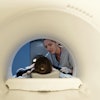A new study published online March 12 in JAMA Oncology found that geographic regions where imaging overuse is common for prostate cancer also see high overuse rates of breast cancer imaging -- a very different type of disease. The findings indicate that imaging overuse could have a regional component, a development that might complicate efforts to reduce the phenomenon.
Researchers from New York University (NYU) Langone Medical Center found that in areas where prostate cancer patients are likely to receive unnecessary imaging, breast cancer patients are also likely to get inappropriate imaging exams. Because the two types of cancer involve different types of patients and treatment paths, the group interpreted the results as underscoring the role of geography in driving healthcare utilization.
However, recent efforts to control inappropriate utilization have neglected to use a regional approach, indicating that public policy experts could be missing out on a valuable tool for reducing healthcare costs (JAMA Oncol, March 12, 2015).
Healthcare waste
It's well-known that the U.S. has a problem with healthcare utilization, with some estimates indicating that as much as 30% of medical spending is wasted. The problem has been tackled from a number of angles, including the Choosing Wisely initiative, in which different medical organizations publish lists that cite five overused procedures in their specialties.
The idea behind Choosing Wisely is that specialists will become more aware of the overused procedures, and will be less likely to order them when discussing diagnosis and treatment plans with patients. But such an approach may be ignoring regional-based factors that affect overutilization, according to Dr. Danil Makarov, a urologist at NYU and lead author of the JAMA Oncology study.
"Most of the policy approaches to overutilization focus solely on improving the patient-physician interaction, so each time a patient and physician get together they come to the appropriate answer on imaging to use -- and that's great," Makarov told AuntMinnie.com. "But I think there is more to the story."
Makarov's previous work discovered regional variations in imaging use for prostate cancer patients. Those findings raised the question of whether other imaging procedures are also overused in the same regions. To avoid potential overlap in patient populations and physicians that might confound a comparison, Makarov's team picked breast cancer as the disease that probably has the least in common with prostate disease.
The researchers used data from the Surveillance, Epidemiology, and End Results (SEER) database, identifying 9,219 men who had low-risk prostate cancer and 30,398 women with low-risk breast cancer who were diagnosed between 2004 and 2007. They then determined how many received imaging studies that would have been considered inappropriate under the Choosing Wisely guidelines from the American Society of Clinical Oncology (ASCO).
The guidelines advise against using PET, CT, and radionuclide scans in cases of low-risk breast and prostate cancer. ASCO didn't make its contribution to Choosing Wisely until 2012, so the study provides a good snapshot of utilization before the guidelines came into effect, Makarov believes.
Finally, the researchers cross-referenced rates of inappropriate utilization by hospital referral region (HRR), a commonly used term referring to the geographic patient catchment area of a tertiary care hospital.
They found high rates of inappropriate imaging for both prostate cancer, at 44.4%, and breast cancer, at 41.8%. But more significantly, they found that inappropriate prostate cancer imaging rates were associated with inappropriate breast cancer imaging rates, with a Pearson coefficient of 0.35 (Pearson values above 0 indicate a relationship; p < 0.01).
Put another way, if a man with low-risk prostate cancer lived in a hospital referral region that had some of the highest rates of inappropriate breast cancer imaging, he would have a 72% higher chance of getting inappropriate prostate imaging than a man in a region where appropriate use was more common.
Location, location, location
What's the reason for the connection? Do some regions simply have better technology or more built-up healthcare infrastructure that leads to more imaging use?
Makarov isn't sure that's the case. The medical imaging modalities used for breast and prostate cancer are typically bread-and-butter modalities such as CT that are widely available, as opposed to advanced technologies only found at academic centers.
Instead, previous studies by Makarov indicate that "overuse of low-value imaging tests among cancer patients may be driven by factors within geographic regions." This is significant, he believes, because initiatives like Choosing Wisely take a one-size-fits-all approach to tackling overuse and don't focus on trends that are occurring on a regional basis.
Indeed, a 2013 report by the Institute of Medicine (IOM) on geographic variation in healthcare spending declined to recommend geographic-based solutions to overutilization, such as setting payment levels that vary in regions where overuse occurs; the problem is that they might penalize appropriate utilization as well. Instead, IOM opted to recommend approaches that target physician decision-making -- as Choosing Wisely does.
Either way, there is no easy solution to the overutilization problem, but Makarov believes the new study highlights the fact that geographic variations deserve more attention. For future research, he hopes to look at utilization of imaging for other diseases such as lung cancer, or to perform qualitative studies by interviewing doctors and patients to uncover practice patterns in specific regions.
Ultimately, another study could be performed to examine prostate and breast cancer imaging in the era after the Choosing Wisely guidelines, but that could be at least four years away.
"I love Choosing Wisely, but my sense is that it will be insufficient to tackle the problem completely," Makarov said. "It's not just randomness and noise that create regional variation. We think this suggests the hypothesis that there are regional-level factors that need to be tackled before we solve the overutilization problem completely."



















